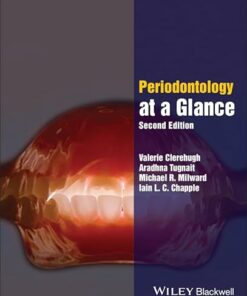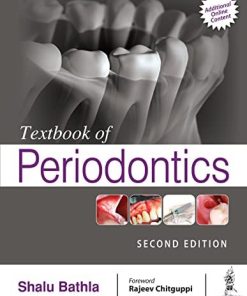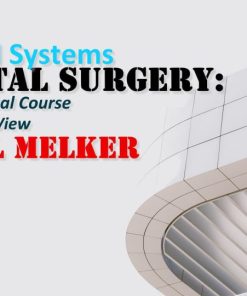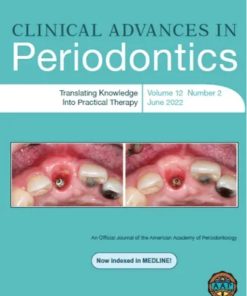Periodontal Disease: What You Need to Know About Prevention and Treatment
Take Action Now to Protect Your Oral Health with Periodontics
Periodontics is a branch of dentistry that focuses on the prevention, diagnosis, and treatment of diseases that affect the gums and other structures that support the teeth. It is important to take action now to protect your oral health by visiting a periodontist for regular check-ups and treatments. A periodontist can help you maintain healthy gums and prevent gum disease. They can also provide treatments such as scaling and root planing, which removes plaque and tartar from below the gum line, and pocket reduction surgery, which reduces the depth of pockets between the teeth and gums. If you are experiencing any signs of gum disease, such as redness, swelling, or bleeding, it is important to seek professional help right away. A periodontist can diagnose and treat the condition before it becomes more serious. For more information about periodontics and how it can help protect your oral health, visit DentalBooks.net. Don’t wait – take action now to protect your oral health with periodontics!
PERIODONTICS
Dental Video
PERIODONTICS
Dentistry Video
Dental Books
Dental Books
Dental Books
Guided Bone Regeneration: A 30 year Biological and Clinical Journey in Ridge Augmentation
Dental Books
Periodontal Manifestations of Local and Systemic Diseases: Color Atlas and Text 2nd ed. 2023 Edition
Dental Books
Introduction
Periodontal disease, also known as gum disease, is a serious condition that affects the health of your gums and teeth. If left untreated, it can lead to tooth loss and other serious health problems. Fortunately, there are steps you can take to prevent and treat periodontal disease. In this article, we'll discuss what periodontal disease is, how it's caused, and what you can do to protect yourself from it. We'll also cover the different treatments available for periodontal disease and how to find the right one for you. By understanding the causes and treatments of periodontal disease, you can keep your mouth healthy and avoid the pain and discomfort associated with this condition.
What is Periodontal Disease and How Does it Develop?
Periodontal disease, also known as gum disease, is an infection of the tissues that surround and support the teeth. It is caused by bacteria in plaque, a sticky film that forms on the teeth. If not treated, periodontal disease can lead to pain, tooth loss, and other serious health problems.
The early stage of periodontal disease is called gingivitis. In this stage, the gums become red, swollen, and bleed easily. This is usually caused by inadequate oral hygiene. If gingivitis is not treated, it can progress to periodontitis.
In periodontitis, the gums pull away from the teeth and form spaces (called pockets) that become infected. The body’s immune system fights the bacteria as plaque spreads and grows below the gum line. As the disease progresses, the pockets deepen and more gum tissue and bone are destroyed. Eventually, teeth may become loose and have to be removed.
Risk factors for periodontal disease include smoking, diabetes, certain medications, genetic predisposition, poor nutrition, and stress. Poor oral hygiene is the most significant risk factor. Brushing twice a day, flossing daily, and regular dental visits can help prevent periodontal disease.
Treatment for periodontal disease depends on the stage of the disease. In the early stages, a professional cleaning (scaling and root planing) may be enough to reverse the damage. In more advanced cases, surgery may be necessary to restore damaged bone and tissue.
Periodontal disease is a serious condition that can lead to tooth loss and other health problems. Taking good care of your teeth and gums is the best way to prevent it. Regular dental checkups and professional cleanings are essential for maintaining good oral health.
The Role of Oral Hygiene in Preventing Periodontal Disease
Oral hygiene is an important part of overall health and well-being. It is essential for preventing periodontal disease, which is a serious infection of the gums and other structures that support the teeth. Periodontal disease can lead to tooth loss, pain, and other serious health problems.
Good oral hygiene habits are key to preventing periodontal disease. Brushing twice a day with a soft-bristled toothbrush and fluoride toothpaste helps remove plaque, a sticky film of bacteria that accumulates on the teeth. Plaque can harden into tartar, which can only be removed by a dental professional. Flossing daily helps remove plaque and food particles from between the teeth and under the gum line.
In addition to brushing and flossing, regular visits to the dentist are important for preventing periodontal disease. During these visits, the dentist will examine the teeth and gums for signs of periodontal disease. If any problems are found, the dentist may recommend a deep cleaning, also known as scaling and root planing. This procedure removes plaque and tartar from below the gum line and helps prevent further damage.
It is also important to avoid certain behaviors that can increase the risk of periodontal disease. Smoking and chewing tobacco can cause inflammation of the gums and make it harder for the body to fight off infection. Eating a balanced diet and avoiding sugary snacks and drinks can also help reduce the risk of periodontal disease.
By following good oral hygiene habits and visiting the dentist regularly, you can help protect your teeth and gums from periodontal disease. Taking care of your mouth now can help you maintain a healthy smile for years to come.
Common Symptoms of Periodontal Disease
Periodontal disease, also known as gum disease, is a serious condition that affects the gums and other structures that support the teeth. It is caused by bacteria in plaque, which builds up on the teeth and gums. If left untreated, periodontal disease can lead to tooth loss and other serious health problems.
Common symptoms of periodontal disease include red, swollen, or tender gums; bleeding when brushing or flossing; receding gums; bad breath; and loose teeth. In advanced cases, there may be pus between the teeth and gums, and the teeth may become loose or fall out.
The first stage of periodontal disease is called gingivitis. This is an inflammation of the gums caused by plaque buildup. Symptoms of gingivitis include red, swollen, or tender gums; bleeding when brushing or flossing; and bad breath. If gingivitis is not treated, it can progress to periodontitis.
Periodontitis is a more serious form of periodontal disease. It occurs when the gums become infected and pull away from the teeth. This creates pockets between the teeth and gums where bacteria can accumulate and cause further damage. Symptoms of periodontitis include receding gums, bad breath, loose teeth, and pus between the teeth and gums.
If you experience any of these symptoms, it is important to see your dentist right away. Early diagnosis and treatment are key to preventing further damage and preserving your oral health. Your dentist will examine your mouth and take X-rays to determine the extent of the damage. Treatment may include scaling and root planing, antibiotics, and surgery. With proper care, periodontal disease can be managed and even reversed.
Diagnosing and Treating Periodontal Disease
Periodontal disease, also known as gum disease, is a serious condition that affects the gums and bones that support the teeth. It is caused by bacteria in plaque, which builds up on the teeth and gums. If left untreated, periodontal disease can lead to tooth loss and other serious health problems.
The first step in diagnosing and treating periodontal disease is to have a comprehensive dental exam. During this exam, your dentist will look for signs of periodontal disease, such as red, swollen, or bleeding gums; receding gums; loose teeth; and bad breath. Your dentist may also take X-rays to check for bone loss around the teeth.
Once periodontal disease has been diagnosed, your dentist will create a treatment plan to address the problem. Treatment may include scaling and root planing, which involves removing plaque and tartar from below the gum line and smoothing the roots of the teeth to help the gums reattach to the teeth. In some cases, antibiotics may be prescribed to help fight infection.
In addition to professional treatment, there are steps you can take at home to help manage periodontal disease. Brushing twice a day with a soft-bristled toothbrush and flossing daily can help remove plaque and prevent it from building up. You should also avoid smoking, as it can worsen periodontal disease.
If you have periodontal disease, it is important to follow your dentist’s instructions and attend regular checkups. With proper care, you can keep your teeth and gums healthy and reduce your risk of developing more serious complications.
The Benefits of Early Detection and Treatment of Periodontal Disease
Periodontal disease, also known as gum disease, is a serious condition that affects the gums and bones that support the teeth. It is caused by bacteria in plaque that builds up on the teeth and gums. If left untreated, periodontal disease can lead to tooth loss and other serious health problems.
The benefits of early detection and treatment of periodontal disease are numerous. Early detection allows for prompt treatment, which can help prevent further damage to the gums and bones that support the teeth. Treatment may include scaling and root planing, antibiotics, or surgery.
Early detection and treatment of periodontal disease can help reduce the risk of developing more serious health problems. Studies have shown that people with periodontal disease are at an increased risk for heart disease, stroke, diabetes, and other chronic conditions. By treating periodontal disease early, these risks can be reduced.
Early detection and treatment of periodontal disease can also help improve overall oral health. Periodontal disease can cause bad breath, receding gums, and loose teeth. Treating the disease early can help prevent these symptoms from becoming worse.
Finally, early detection and treatment of periodontal disease can help save money in the long run. The cost of treating periodontal disease increases as the disease progresses. By catching it early, you can avoid costly treatments down the road.
Overall, the benefits of early detection and treatment of periodontal disease are clear. Prompt treatment can help prevent further damage to the gums and bones that support the teeth, reduce the risk of developing more serious health problems, improve overall oral health, and save money in the long run. If you think you may have periodontal disease, it is important to see your dentist right away for an evaluation and treatment.
Conclusion
Periodontal disease is a serious condition that can lead to tooth loss and other health complications. Fortunately, it is preventable with good oral hygiene habits and regular dental visits. Treatment options vary depending on the severity of the disease, but may include scaling and root planing, antibiotics, and surgery. With proper prevention and treatment, periodontal disease can be managed and its effects minimized.































